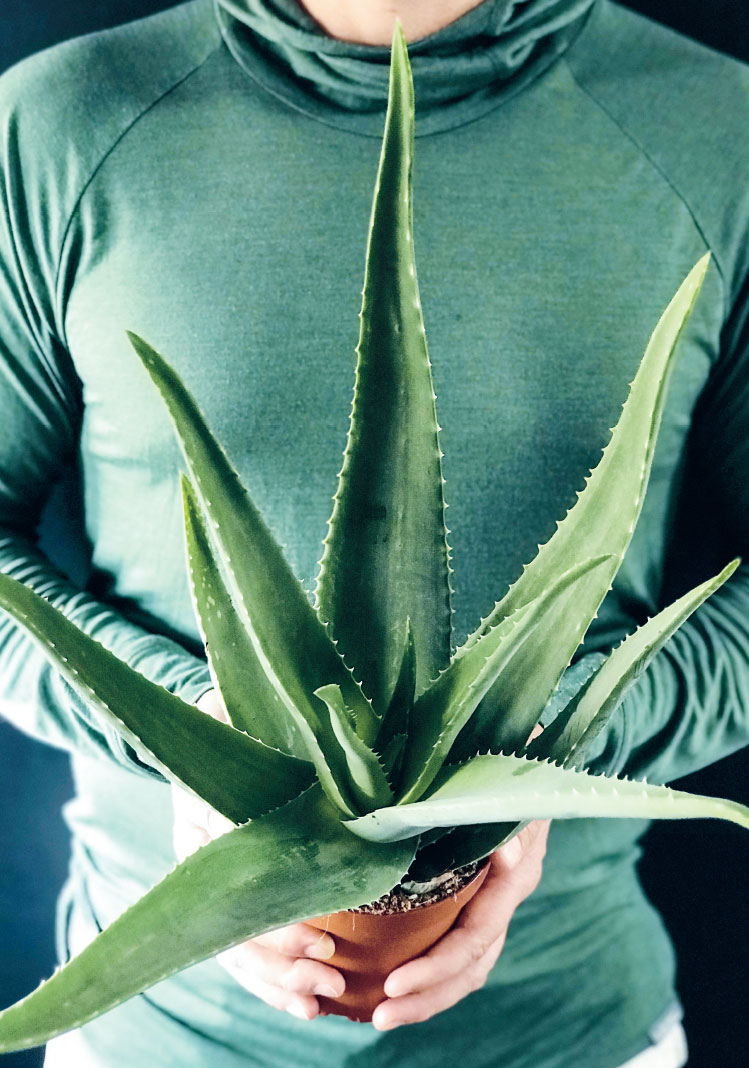 LIGHT
LIGHTA succulent that stores water in its leaves, aloe vera, is extremely robust. It can go for several months without access to water. Aloe vera isn’t just beautiful and interesting to look at – the gel found inside the leaves also has proven medicinal properties and can alleviate mild skin irritations, such as sunburn and redness.
 LIGHT
LIGHT
Aloe vera enjoys a good, well-lit position, ideally in direct sunlight. It is accustomed to desert conditions, so give it as much sun as possible.
 WATERING
WATERING
It needs extremely moderate watering. Aloe vera likes to dry out completely between waterings. It can usually be watered every other week, but sparingly. During winter, once a month will be enough.
 SOIL
SOIL
Use cactus and succulent compost with a layer of leca balls in the bottom. You can also use ordinary potting compost.
 FEEDING
FEEDING
This is an extremely frugal plant, so be stingy with the plant food. Give a little liquid organic plant food, or apply a specific fertilizer for succulents, once a month throughout spring and summer.
 ORIGIN
ORIGIN
It is thought to come from Oman, though its origin is uncertain because merchants and mariners have taken it across the globe over the centuries due to its beneficial healing properties.
 MISCELLANEOUS
MISCELLANEOUS
You can use the gel from the plant to soothe skin irritations. Aloe vera is a bit like a cucumber: it’s 96 per cent water and it retains moisture exceptionally well. You can quite happily put an aloe vera outside during the summer – but give it a protected position beneath a roof so that you can control how much rainwater it gets. Note that aloe vera is mildly toxic to cats and dogs.
